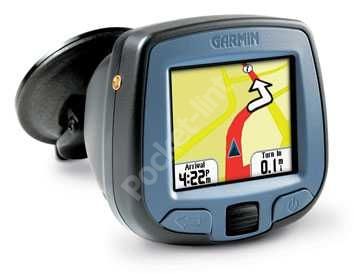Garmin's latest GPS navigation unit comes in at under the £200, and almost £70 cheaper than its nearest rival, so can the company produce a device without cutting corners? We take it for a road test and find out.
The shape of a cricket or baseball, the Garmin i3 is small and handy in size, making it ideal for the car, bike or just carrying around. Power in-car is provided by the included charger that plugs into your cigarette lighter and it's here the first clues to the cuts appear. There is no in-built rechargeable battery, and mobile power is via two AA batteries. The exclusion of a rechargeable battery does have its effects on the performance, mainly that if you punch in the destination whilst the car engine is turned off, and then you turn the engine on it re-starts the device and you have to scroll through to your 'latest destinations' list to get started.
Cut number two - no touch screen. Luckily this isn't a problem as entering the address is very simple and we loved the “Where to?” command which gets you started. Addresses are inputted via the unit's scroll wheel on the front on the device and you can enter street, city, postcode or point of interest. The point of interest is useful if you want to know where everything from the nearest fast food restaurant to council building is.
When it came to navigating around the country, the unit provided interesting results. In our tests, we experienced problems with keeping a signal. We especially had problems in built-up areas and tree line roads. Taking it out of the car in the same area however and the problems disappeared suggesting that the second corner to be cut is in the power of the GPS reciever.
The car we tested it in was a Land Rover Freelander and we think it might have been the glass used in the windscreen that caused the signal to be weakened. Either way, it's certainly something to bear in mind if you drive a modern car. Either select a GPS unit with a bigger, better performing reciever, or make sure you opt for the optional bolt-on sold by Garmin.
Even when we did get a signal we still experienced problems. On one test run the unit decided to send us down a dead end and at certain points it would say “take the next turning on the right” when all it would be was a bend to the right.
On the plus side, when we had taken a wrong turning the unit was extremely fast to re-route itself, which was very useful for getting back on track and not getting more and more lost!
Enough of the bad, and on to the good. The things we liked were the voice instructions, the fact that at the top of the display it has written the next instruction, so if you have a bad memory it's nice as a memory jogger.
It was also nice to be able to easily take the device off the windscreen to hide (the screen grip is a ball and socket design)
Furthermore because the unit is so small its easy to slip in a bag or glove compartment.
Our quick take
The Garmin i3 is a good for the price, but it does come with catches. It is the first GPS we've tested since the original TomTom Go that constantly had trouble locking on to a GPS signal.
The lack of an in-built rechargeable battery is something we can live with, however we were concerned with having two AA batteries in the unit and connecting it to the cigarette lighter, something that you could easily forget.
So mixed results. The size of the unit and the usability of the menus makes us want to give this a higher score, but the patchy signal reception and battery means it's a 7/10 rather than anything higher.

Garmin i3 GPS unit - 3.5 / 5
| FOR | AGAINST |
|---|---|
|
|
To recap
Mixed results. The size of the unit and the usability of the menus makes us want to give this a higher score, but the patchy signal strength and battery means it’s a 7/10 rather than anything higher
